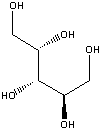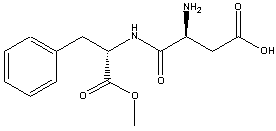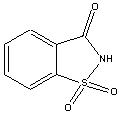
Sweeteners
Sweeteners are very important for diabetics in the control of their BG levels. If there were no sweeteners around, type 1 diabetics would have to inject themselves far more often, because they would find it more difficult to avoid sugars. Many sweeteners are, in fact sweeter than sugar, but some research suggests that they may be carcinogenic.
Xylitol
Xylitol is a very common sweetener, used in all sorts of
sugar-free sweets, such as chewing gum.  Xylitol
is a different kind of sweetener to aspartame and saccharin.
Xylitol
is a different kind of sweetener to aspartame and saccharin.
Aspartame
Aspartame, a dipeptide ester, is another relatively well-known sweetener, but it has
had some very bad press, especially in Nexus
Magazine. According to an article in this magazine, aspartame is by far the
most dangerous food additive on the market. Indeed, 75% of adverse
reactions to food additives reported to the US Food and Drug Administration
(FDA) could be accounted for by aspartame. Research into the adverse effects of
aspartame shows that several chronic illnesses can be triggered or
worsened by ingesting it.
Indeed, 75% of adverse
reactions to food additives reported to the US Food and Drug Administration
(FDA) could be accounted for by aspartame. Research into the adverse effects of
aspartame shows that several chronic illnesses can be triggered or
worsened by ingesting it.
Saccharin
Saccharin is another very common sweetener and is
one of the oldest synthetic compounds still in commercial use. It was discovered
by Ira Remsen in 1879, who tasted (!) it after synthesising it in his lab.  This
is how he found out that it was very sweet (300 times as sweet as sugar). It has
proved to be incredibly useful for diabetics , but the possibility that it is
carcinogenic was raised in the 1960s.
This
is how he found out that it was very sweet (300 times as sweet as sugar). It has
proved to be incredibly useful for diabetics , but the possibility that it is
carcinogenic was raised in the 1960s.